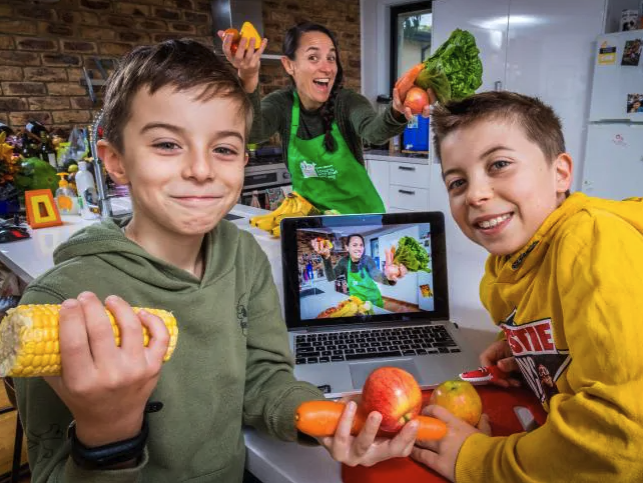
Encouraging your kids to get involved with making food for themselves and the family can help them to build healthier food habits that can stay with them for a lifetime. Siobhan Boyle, CEO of The Good Foundation – facilitators of Jamie’s Ministry of Food Australia – shares her best tips for getting your kids participating in the kitchen.
Research has shown that 27 percent of Aussie kids are overweight. Kids who learn to cook have better diets, and these healthy habits formed in childhood carry through to adulthood. Getting kids in the kitchen is not only important to teach them about making healthy decisions – it also aids in other aspects of life, like problem-solving, following instructions, comprehension, reading and numerical skills.
Health experts warn that Australia is one of the most obese countries in the world per capita. In 2014-15, 63.4 percent of Australian adults were overweight or obese (that’s 11.2 million people), an increase from 56.3 percent in 1995. Australian children have been affected by this health epidemic, too, with one in four children now overweight or obese.
The prevalence of obesity and other alarming health issues, such as type 2 diabetes, continues to rise in Australia, which means we have to act now if we’re going to make a change for the better. So, what can you do? Start by getting your kids in the kitchen with these five simple but effective tips.
1. Get kids involved in food preparation
Let your little ones rip up herbs, watch the pasta cook or get hands-on with the egg wash. Channel their enthusiasm into anything that’s safe for them to have a go at. Kids are more likely to try dishes that they’ve had input in creating themselves.
We’ve found through our courses that some kids swear they hate tomatoes, for example, but after dicing one up themselves and adding a bit of basil they suddenly enjoy it. This, in turn, makes them more inclined to try different dishes with tomatoes involved, making it a great way to broaden the scope of foods your kids are willing to try.
2. Make it fun and engaging
Ever heard that old saying, “pasta is cooked when it sticks to the wall”? Maybe you don’t want to have a kitchen wall covered in pasta every day, but incorporating fun elements into the cooking process helps to keep children engaged and intrigued by the cooking process. Cracking eggs, mixing ingredients together, tossing lettuce leaves with their hands and making an inevitable mess will ensure your child will want to participate in meal prep.
3. Appeal to all of their senses
Don’t just have Junior mindlessly stirring dry ingredients together – stimulate all their senses during the cooking process. This could include:
• Tearing and smelling fresh herbs like basil, mint or parsley.
• Taste-testing unusual ingredients they may have never tried, like fennel or olives.
• Squishing dough or pastry between little fingers.
• Watching how the water changes as the pasta boils.
• Describing the different sounds they can hear as you chop, stir and sizzle.
4. When cooking their favourite meals, always involve them
If you have a fussy eater, get them in the kitchen to prepare a dish they love, whether that’s spaghetti bolognese or fish and chips. As your kids become more adventurous and comfortable in the kitchen, they’ll be more inclined to try different foods. Kids are far more likely to try foods that they think they don’t like if they’ve had a hand in the preparation.
5. Don’t be put off if they don’t love the result
It doesn’t matter if your kids don’t immediately like what they’ve created – as long as they’re involved in the process, they’re always learning! Cooking is an important life skill, and cooking anything from scratch enhances the learning process and helps to solidify a positive relationship with fresh ingredients and preparing food.
Studies have shown if your kids eat the right food before the age of 14, not only will they have better mental health outcomes, they’ll also learn more and have better concentration. So, take some time this weekend or during the school holidays to get your kids into the kitchen and give these tips a try – you might be surprised by their response.
This article was originally posted by Eativity.
Cooking, food, Healthy Eating




